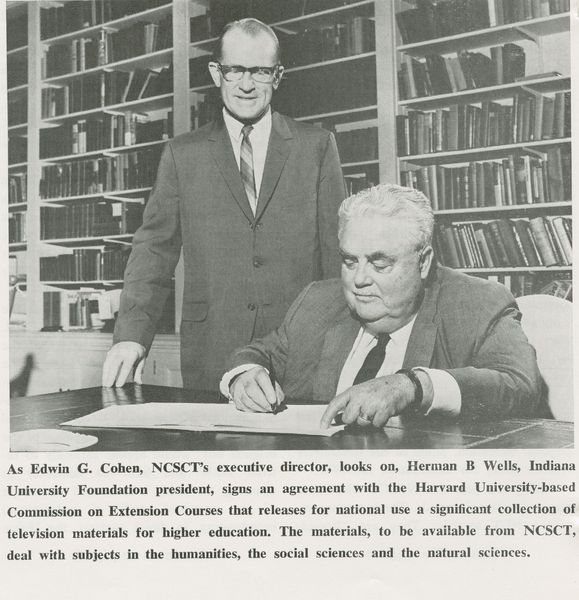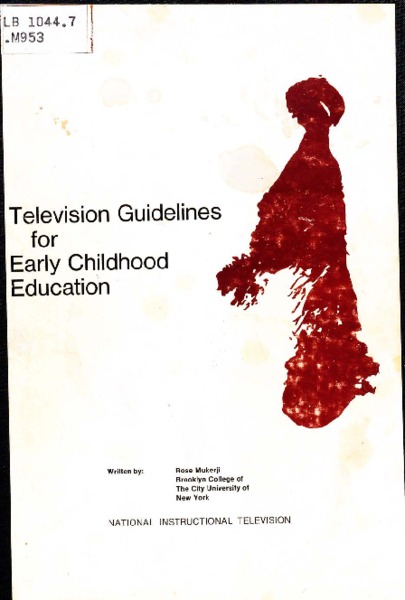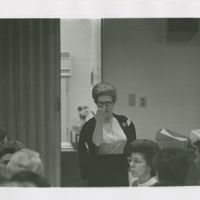Planning and Development

Taken from an NCSTC 1967 newsletter, AIT Collection. (The collection contains the company's newsletters from 1966-1996)

Television Guidelines for Early Childhood Education, AIT Collection (click on the image to read document in its entirety)
In the years preceding 1969, a consortium of educators and television professionals met at the National Instructional Television (NIT) Headquarters in Bloomington to figure out how to produce better more effective educational programming for children. NIT, which later evolved into the Agency for Instructional Television/Technology (AIT), and was itself born out of the National Center for School and College Television (NCSCT) was in the process of establishing itself as pioneer in creating educational television programming in the United States. At every step of the organization’s evolution, Indiana University was closely involved in supporting the production and distribution of educational media, which have become the cornerstone of Indiana University Libraries Moving Image Archive’s collections today.
Following the meeting between educators and television professionals in Bloomington, NIT published its Television Guidelines for Early Childhood Education. The publication detailed the consortia’s review of existing educational programming and documented suggestions for television engineers and curriculum designers to improve educational television programming. For their study, the group reviewed thirty programs designed for both in-school and out-of-school audiences. Much of the content was deemed to be lacking either in substance or style, which necessitated further collaboration in the planning and execution of educational programming by both television professionals and educators. In addition to the specific guidelines presented in the publication to address these issues, the document is a key source for understanding the ideas and philosophies underwriting television as medium for communicating with children and a tool for educating the American public, particularly reflected in statements like:
Television must treat children with respect, must value their sensitivity and must engage them in the adventures of feeling, of knowing and of doing. Television talent can serve as a model to teachers and parents, especially in helping children to develop strategies for learning. Engrossing and important content, stimulating and productive learning experiences and appropriate adult models can be combined by television to produce a potent agent for early childhood education (9)
This vision that aimed to create programs that “treat children with respect” or that “engage them in adventures of feeling…” was not limited simply to producing good content, but was also connected to the effective “cooperation between early childhood educators and skillful television producers.” Thus, the guidelines were meant to unify the medium with educational aspirations and practical goals for the creation of education onscreen at a time when television was still maturing as an educational medium.
The effect that attitudes like this would have on the medium of television itself may still be yet to be explored, but the guidelines produced by the consortium supply several interesting starting points for thinking about how the AIT/NIT collection at Indiana University might be used by researchers to help answer questions regarding the institutionalization of television and other screen media as an educational tool. For instance, there are some clues as to how the contributors to the guidelines saw television as a medium that they said had the power to “offer a language that is simple enough to be understood” by children and could therefore be highly influential in their intellectual development. The responsibility for how that influence is managed could be understood to refer to everything from the depiction of adult behavior onscreen to the ways television conveyed realism in everyday life. These were matters of great concern for the participants attending the consortium.
At the helm of the consortium and the publication of the guidelines was Dr. Rose Mukerji who was professor at the Brooklyn College of Education, and Chief Consultant for the Early Childhood project of National Instructional Television. Her leadership throughout these early years of NIT can be seen across the various meetings, publications, and programming in the AIT paper collection including Ripples, for which she acted as the lead consultant. Her continued influence can be seen in follow up workshops attended once again by television producers and educators to assess the response to the program after it had been broadcast and distributed for a year.

![[Untitled] [Untitled]](https://collections.libraries.indiana.edu/IULMIA/files/square_thumbnails/44046364ab883b6e7a347dc6a4c72f00.jpg)
![[Untitled] [Untitled]](https://collections.libraries.indiana.edu/IULMIA/files/square_thumbnails/91a14e7064c3b9670dee87fb2bf7b3ee.jpg)
![[Untitled] [Untitled]](https://collections.libraries.indiana.edu/IULMIA/files/square_thumbnails/0bc690aef2265fc53f253c3a5ea28737.jpg)
